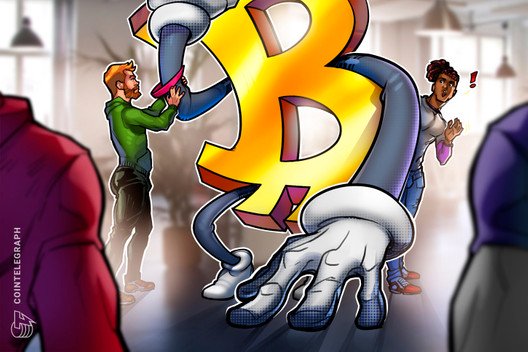Parity CEO Jutta Steiner has said that the new controversial Create2 Ethereum (ETH) function would have prevented the Parity multisig freeze. Steiner spoke on the subject during an interview with Fortune published on March 5.
As Cointelegraph reported in November 2017, a user “accidentally killed” the Parity multisig library by activating a vulnerability to become the owner of the library, and then self-destructing it. The incident involved 587 wallets holding 513,774.16 in Ethereum, at the time equivalent to about $152 million and about $65 million today.
Create2, the new function added to Ethereum with the Constantinople update that has been rumored to introduce a new attack vector — a claim since denied by Ethereum co-founder Vitalik Buterin — could have prevented this attack, according to Steiner. As she noted during the interview:
“If that functionality Create2 had existed at the time, there wouldn’t have been a vulnerability, basically.”
This function also grants Parity a new argument to use when trying to convince the community to support a hard fork that would reverse the reportedly accidental hack.
At the end of April, a vote to reverse the Parity incident and unfreeze the multisignature wallets ended with 55 percent of the votes choosing not to reverse it. The vote was also accompanied by an overwhelming controversy in the Ethereum community, as participants with large amounts of ETH had distinct advantage in influencing the direction of the vote due to the vote staking process.
However, as Steiner now puts it, since that the tooling has been fixed, “wouldn’t it be the right thing to do to also fix the issues that arose when we didn’t have the tooling?”
A recent TrustNodes report points out that the Edgeware smart contract platform based on Polkadot, which is a platform similar to Ethereum and capable of running Ethereum smart contracts and DApps, could be of help to Parity as well. The chain is proof-of-stake (PoS), which means that new native coins, called Edge, are minted by staking them.
As the project’s minting process for its native token can be done by locking ETH in a smart contract, TrustNodes notes that Parity’s accidentally locked funds may be eligible for the project’s lockdrop contract. Through the initial lockdrop distribution, three percent of the supply is reported to be handed over to Parity.
According to TrustNodes’ calculations, the locked funds paired with the “dots” tokens held by Parity (also eligible for staking) would grant the company close to 10 percent of the entire supply. Also taking staking rewards in the account, TrustNodes estimates that the actual percentage of Parity’s holdings would increase.
Polkadot is a blockchain framework meant to create scalable and interoperable blockchains by linking between many types of blockchains, and is slated for release at the end of the current year. The protocol was one of the largest affected parties in the November 2017 Parity funds freeze.








